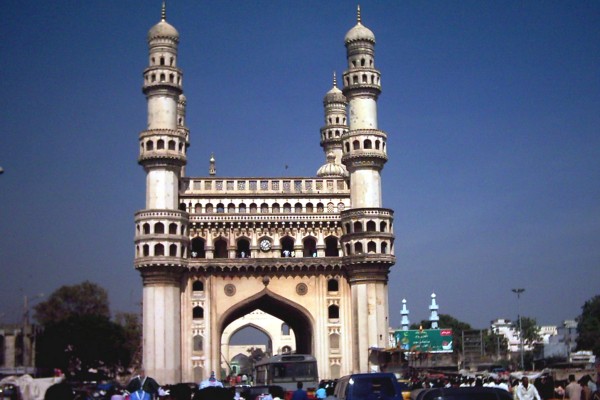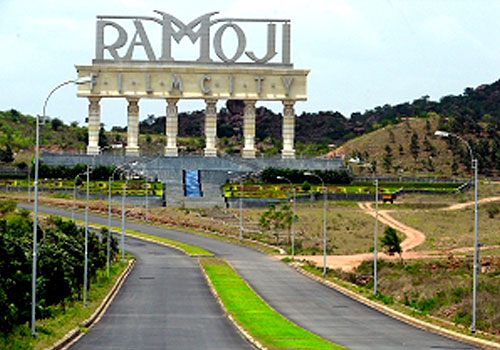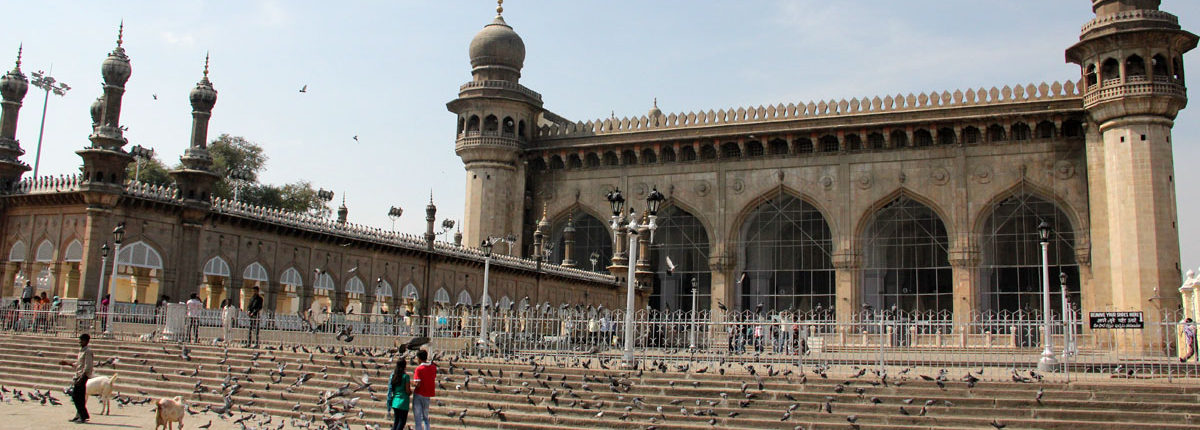Hyderabad city is the capital city of the Indian state of Telangana. The city has an estimated population of around 8 million, making it 4th largest city in India , while the population of the metropolitan area was estimated above 9 million. Religiously and culturally, the city is united with Hindus, Muslims and Christians. Hyderabad city is known for its rich history, food and its multi-lingual culture, both geographically and culturally. Founded in the year 1591 by fifth Qutb Shahi Ruler Muhammad Quli Qutb Shah.
The original city of Hyderabad was founded on the banks of river Musi. Now known as the historic old city, home to the Charminar, Falaknuma Palace, Chowmallah Palace and Makkah Masjid, it lies on the southern bank of the river. Hyderabad and Secunderabad are twin cities, separated by the Husain Sagar (bound by the ‘Tank Bund’), a man made lake made during the time of Ibrahim Qutb Shah in 1562.
Ruled by the Qutub Shahis, the city has a history of nearly 400 years. The capital Bhagyanagar was named after a royal beloved Bhagyamati, who later as the wife of Quli Qutub Shah became Hyder Mahal and thus was born Hyderabad. Hyderabad was founded on the River Musi five miles east of Golconda, the capital of the Qutub Shahi rulers in 1591-92 by Muhammad Quli Qutb Shah. The Qutb Shahi dynasty founded the Kingdom of Golconda, one of the five kingdoms that emerged after the break up of the Bahamani Kingdom. The Qutb Shahis ruled the Deccan for almost 171 years. All the seven rulers were patrons of learning and were great builders. They contributed to the growth and development of Indo-Persian and Indo-Islamic literature and culture in Hyderabad. During the Qutb Shahi reign Golconda became one of the leading markets in the world of diamonds, pearls, steel for arms and also printed fabric. The glory of the Golconda kingdom ended in 1687, when Aurangzeb, the last great Mughal ruler, captured Golconda from Abul Hasan Tana Shah, the last king of Golconda. With the conquest of the Deccan and the South, Aurangzeb succeeded in expanding the Mughal Empire to cover the entire sub-continent. However, after his death in 1707, the Empire rapidly declined. At that time, Mir Quamaruddin, the Governor of the Deccan, who bore the title of Nizam-ul-Mulk Feroze Jung Asif Jah, declared his independence from Mughal rule in 1724. He thus became the first Nizam and the founder of the Asif Jahi dynasty.
In 1769, Nizam Ali Khan Asif Jah II, shifted the capital from Aurangabad (The capital founded by Mughal rulers) to Hyderabad. The seven Nizam’s of the Asif Jahi dynasty ruled the Deccan for nearly 224 years, right up to 1948. During the Asif Jahi period, Persian, Urdu, Telugu and Marathi developed simultaneously. Persian was the official language up to 1893 and then Urdu up to 1948.
When the British and the French spread their hold over the country, the Nizam soon won their friendship without bequeathing his power. The title “Faithfull, Ally of the British Government” was bestowed on Nizam VIL. The rule of the seven Nizam’s saw the growth of Hyderabad both culturally and economically. Hyderabad, under the Nizam’s, was the largest princely state in India. Soon after India gained independence, Hyderabad State merged with the Union of India. On November 1, 1956 the map of India was redrawn into linguistic states, and Hyderabad became the capital of Andhra Pradesh.
For further details, please refer to Telangana Tourism
Information regarding the travel agent will be updated shortly










